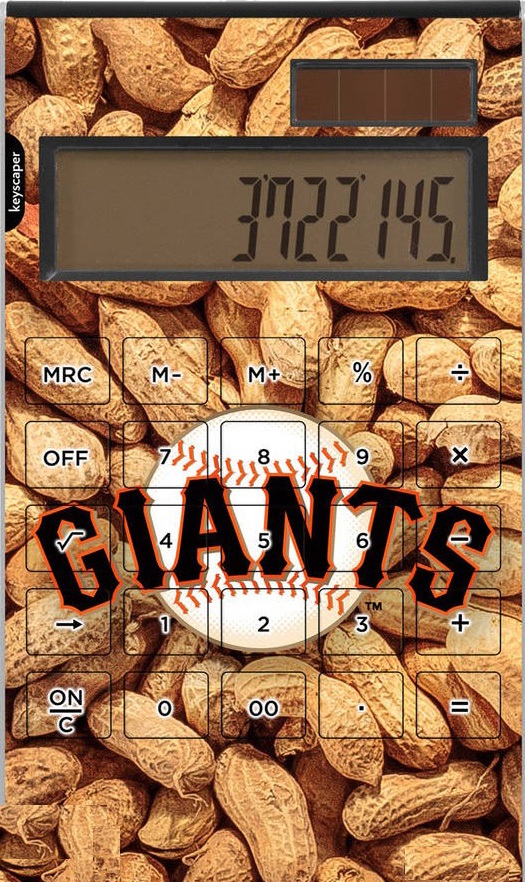You would think the sports section of a metropolitan newspaper would use modern analytical statistics to support their Major League Baseball articles and commentary.

But there are still pockets of old school baseball writers and sports editors who firmly believe in what are called “back of the baseball card” numbers. Because, you see, when they were first exposed to baseball as youngsters the only information you could get about player performance was on the reverse side of those little cards.
And it’s hard to give that up.
(I’ll discuss baseball card stats in detail only if I’m held hostage and forced to do so by the Taliban.)
So on Friday September 7, 2018, San Francisco Giants beat writer Henry Schulman had a featured piece on the front page of the paper’s Sporting Green, with a bold headline above the fold. (I’ll explain what “above the fold” means after I’m released by the Taliban.)
“Belt, snakebit again, mulls various futures” screamed the headline of Schulman’s article, which was lengthy and continued on a back page. It was an overview of Giants first baseman Brandon Belt’s career in San Francisco and what his future might hold.

Plagued by injuries and signed to a five-year $72.8 million extension in 2017, Belt will be making $16 million each season through 2021. He also has a 10 team “no trade” clause in his contract.
To help readers better understand Belt’s 8-year career, a stat chart graphic was included with the article with a bunch of numbers broken down by season. The statistics chosen to illustrate Brandon Belt’s performance were: 1) games played, 2) batting average, 3) home runs, and 4) RBI.
Which gives us an opportunity to remind ourselves exactly why many traditional statistics are false positives, and why relevant baseball statistics really matter.
It’s not that these traditional stats don’t actually tell you much about Belt’s career, they don’t. It’s worse than that.

Let’s briefly dispose of the numbing nothingness of the graphic numbers used in the Chronicle article.
“Batting average” is as close to a worthless statistic as there is in baseball. Batting average counts singles, doubles, triples and home runs as all the same. Which they most definitely are not.
Batting average also does not count walks, a major building block of on base percentage and run scoring.
In the early 2000s, the Oakland A’s built a series of winning seasons around the fact that player OBP was wildly misunderstood and undervalued throughout the game. A’s General Manager Billy Beane realized that walks were not just the result of passive at-bats– they were a critical offensive weapon.
Which kick-started baseball’s analytical revolution. I think there’s a book out about it.
So the idea that a .300 BA is automatically superior to a .235 BA has never been true, it’s just that generations of sports writers and fans believed it was. There are gazillions of examples that expose the uselessness of batting average (simply browse Baseball-Reference.com).
So, what’s a better single measure than batting average? Well, just about anything but I’ll go with “OPS”—on base percentage plus slugging percentage. It’s not perfect, but OPS includes just about everything needed to fully assess individual hitting performance.
Brandon Belt’s career OPS is .812, which is above average for a Major League hitter.
We could also go a step deeper and use wRC+: weighted Runs Created plus. Favored by FanGraphs, wRC+ is a measure of “runs created” that takes in the outcome of each hit, factors in specific park and era effects, and creates an average each season scaled to 100.
So a wRC+ at 100 is always the current MLB average; above 100 is above MLB average and so on.
The current top four wRC+ hitters in the Majors right now are:
Mike Trout LAA 192 wRC+;
Mookie Betts BOS 180 wRC+;
J.D. Martinez BOS 171 wRC+; and,
Alex Bregman HOU 165 wRC+.
Brandon Belt’s wRC+ stats for the past four seasons:
2015 – 132
2016 – 136
2017 – 118
2018 – 108
The next stat used in the Chronicle piece about Brandon Belt’s career is “home runs”. Hey, home runs are pretty important but like “batting average”, they can give a one-dimensional picture of a hitter’s season.
In 2017 Jed Lowrie of the Oakland A’s hit just 14 HR, but he had an .808 OPS and a 4.0 WAR (Wins Above Replacement). Also last year, Rougned Odor of Texas hit 30 HRs, but his total offensive output was a .649 OPS and a -.02 WAR.
Home runs are nice, but isolated home run numbers can be myopic.
The last stat of Brandon Belt’s career offensive production cited in the article is the most embarrassing and misleading of all: runs batted in.
RBI does not measure an individual hitter’s performance. It’s totally dependent on how the players around that hitter perform—because other players have to first get on base and then be in scoring position for an RBI to happen.
“Knocking in runs” is also very dependent on an endless list of defensive factors (some opposing teams have fielders with great arms or great range, and some do not– which affect hitters’ RBI).

Belt slugs more extra base hits (an avg. of 43 per season, career) than Posey (an avg. of 39 per season, career); while Posey’s career .375 OBP is better than Belt’s .357 OBP.
Measured by wRC+ Posey has a lifetime 132, Belt is not far behind with a 125 wRC+. So both players are significantly above MLB average.
Statistics used to measure individual MLB player performance should do exactly that. A hitter’s batting average and RBI totals do not do that. Pitcher “wins”, “losses”, and “saves” absolutely don’t do that.
Any time a statistical measurement goes away from the individual player, and depends on the performance of other players, it’s invalidated.
These kinds of baseball stats are not just outdated, they never measured what they pretended to measure in the first place.
Someday, they will stop roaming our planet and we can be smarter about this stuff. Even the San Francisco Chronicle.
Add The Sports Daily to your Google News Feed!







